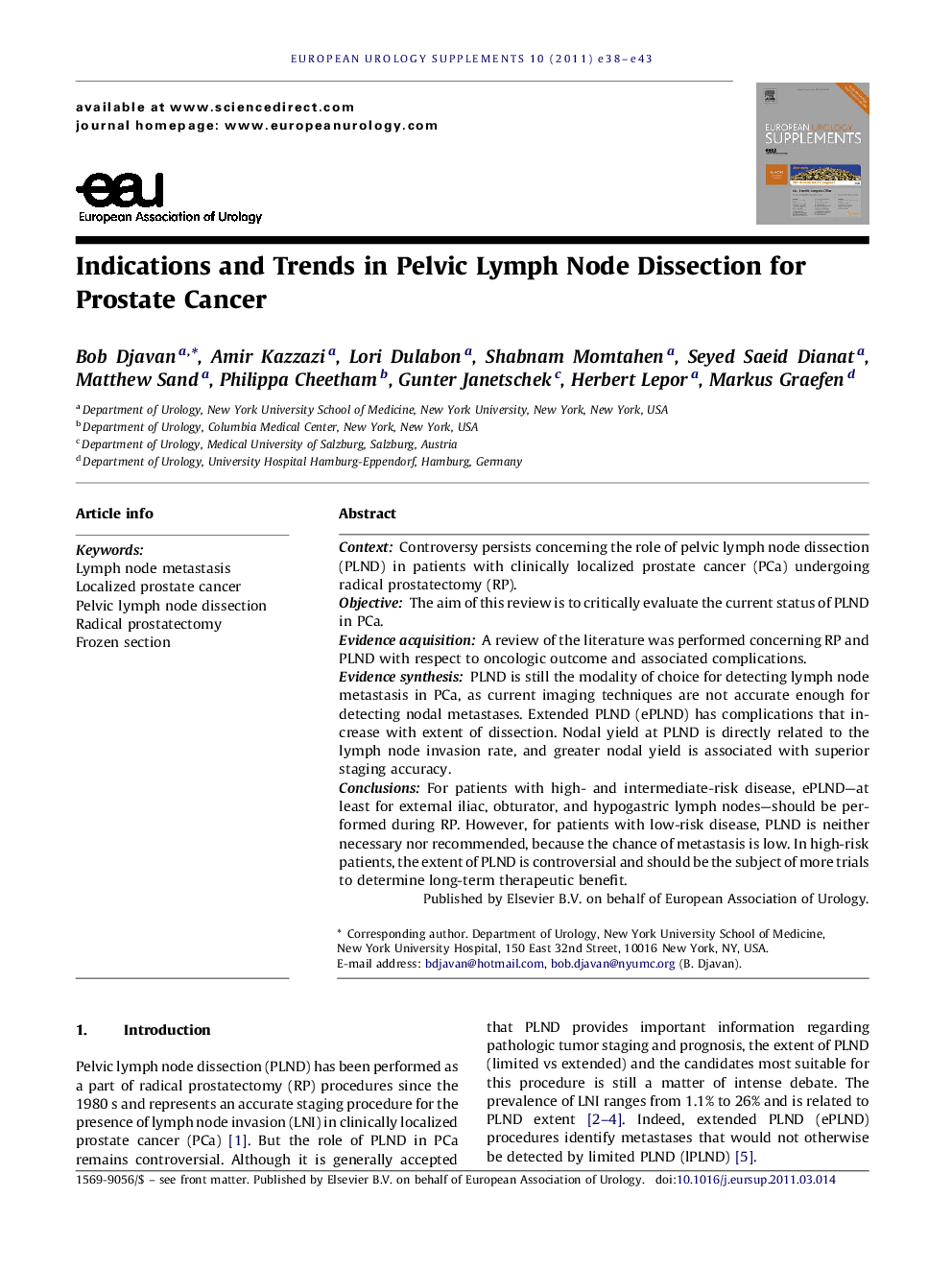| Article ID | Journal | Published Year | Pages | File Type |
|---|---|---|---|---|
| 3930356 | European Urology Supplements | 2011 | 6 Pages |
ContextControversy persists concerning the role of pelvic lymph node dissection (PLND) in patients with clinically localized prostate cancer (PCa) undergoing radical prostatectomy (RP).ObjectiveThe aim of this review is to critically evaluate the current status of PLND in PCa.Evidence acquisitionA review of the literature was performed concerning RP and PLND with respect to oncologic outcome and associated complications.Evidence synthesisPLND is still the modality of choice for detecting lymph node metastasis in PCa, as current imaging techniques are not accurate enough for detecting nodal metastases. Extended PLND (ePLND) has complications that increase with extent of dissection. Nodal yield at PLND is directly related to the lymph node invasion rate, and greater nodal yield is associated with superior staging accuracy.ConclusionsFor patients with high- and intermediate-risk disease, ePLND—at least for external iliac, obturator, and hypogastric lymph nodes—should be performed during RP. However, for patients with low-risk disease, PLND is neither necessary nor recommended, because the chance of metastasis is low. In high-risk patients, the extent of PLND is controversial and should be the subject of more trials to determine long-term therapeutic benefit.
